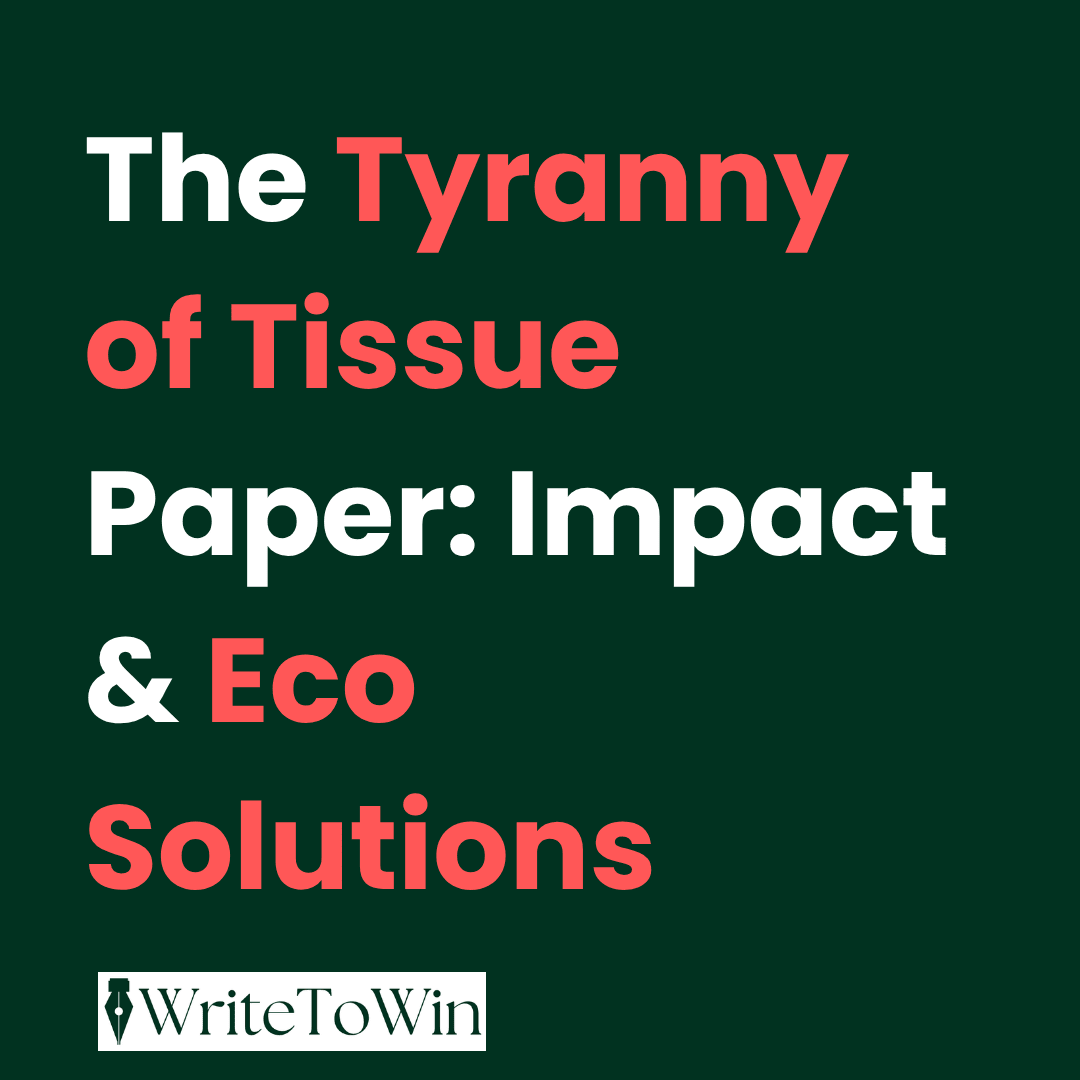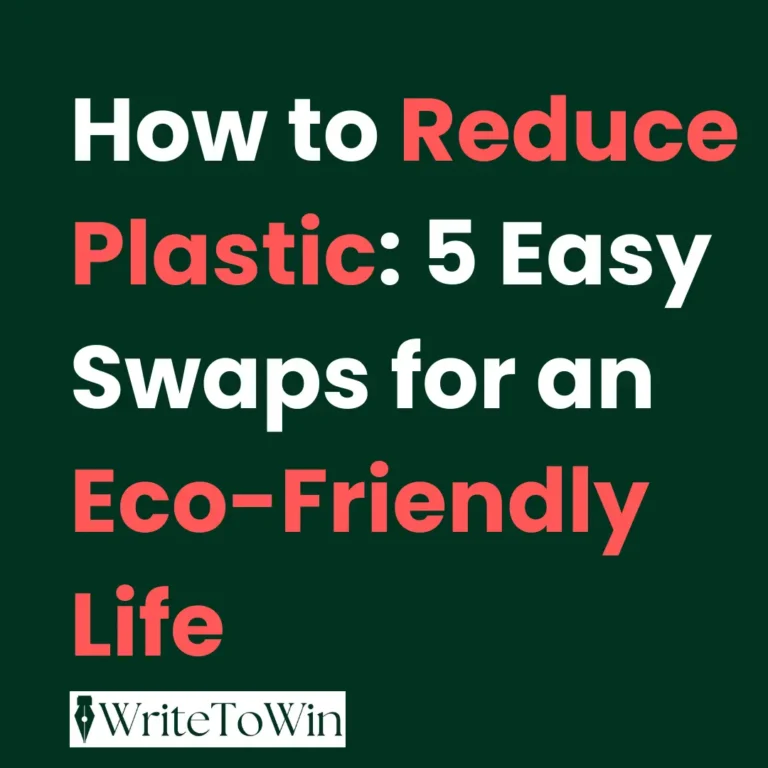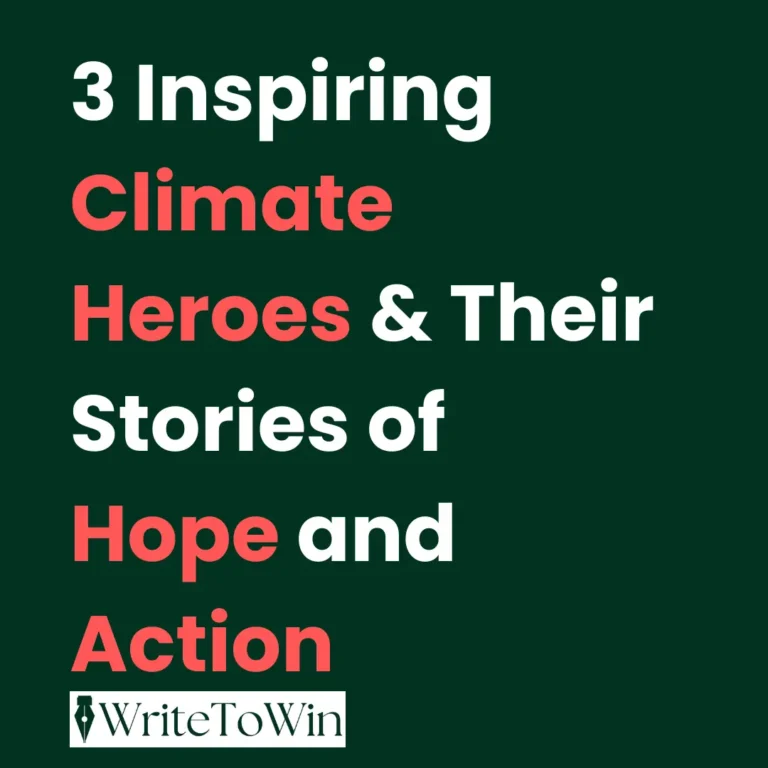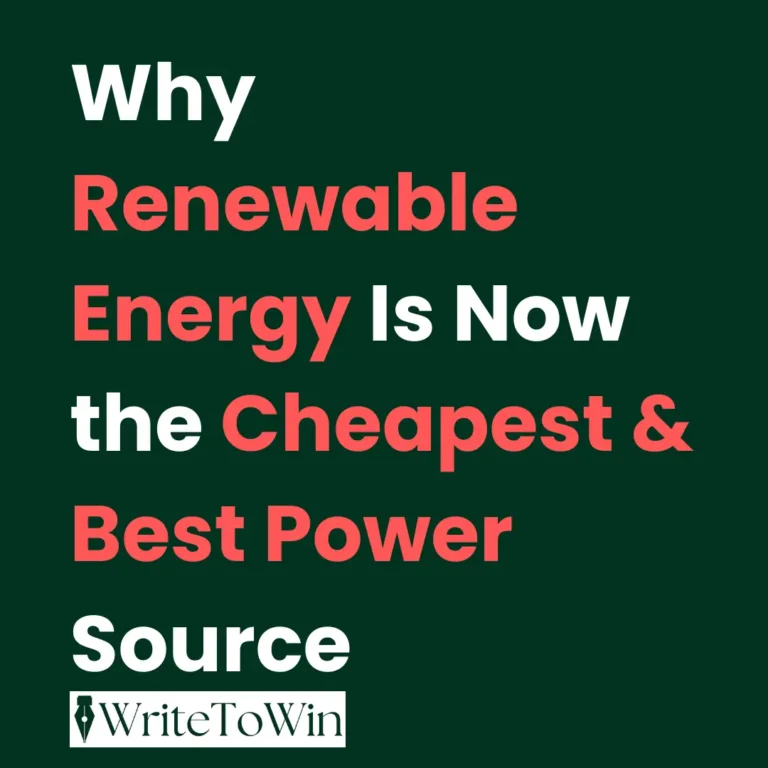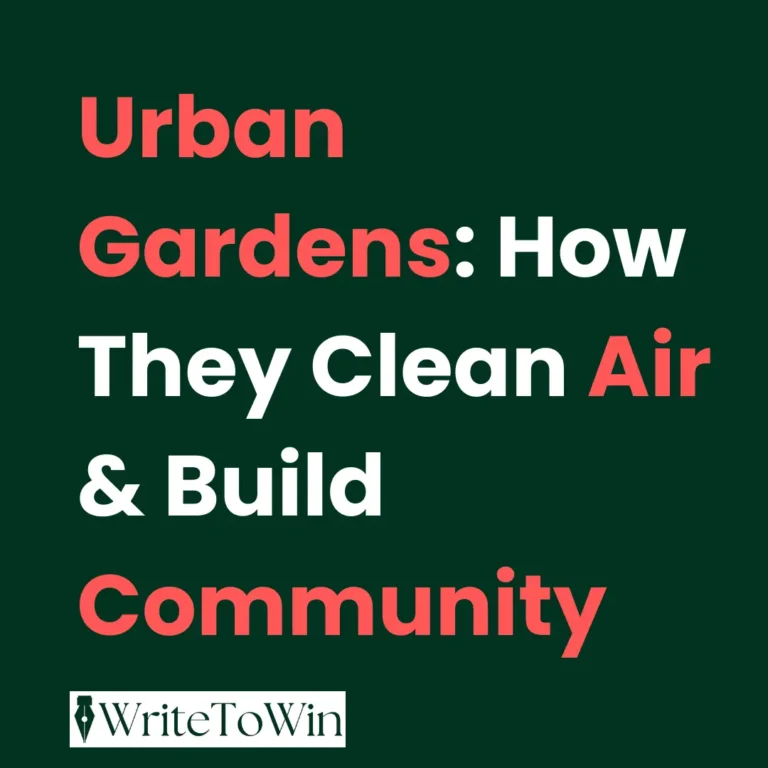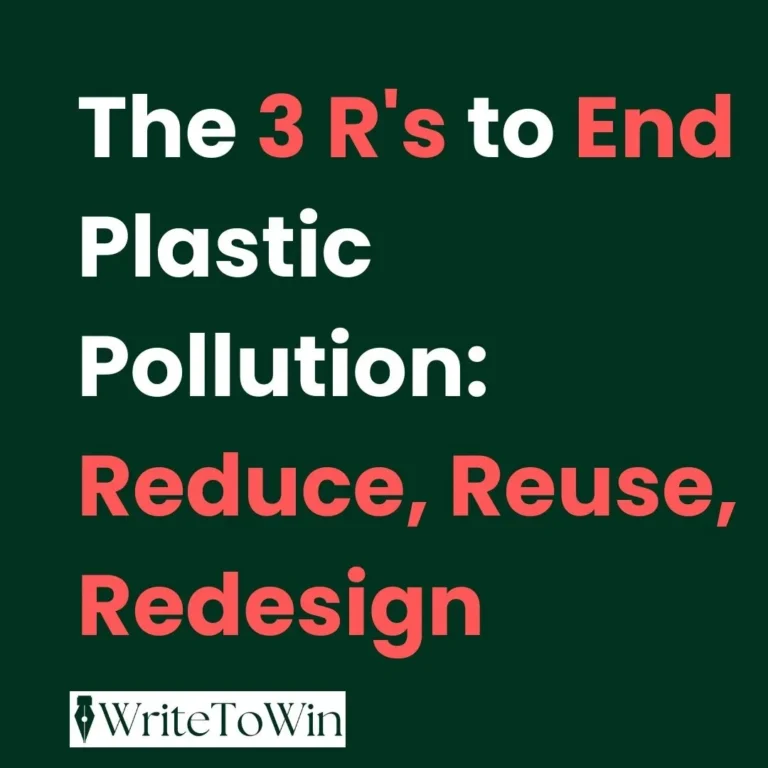Here’s a number that might make you pause mid-wipe: the average person uses 8.6 kilograms of tissue paper every year. That’s roughly the weight of a medium-sized dog, except instead of loyal companionship, we’re talking about something we use for thirty seconds before tossing into the bin without a second thought.
Picture your morning routine: you grab a tissue to blow your nose, another to wipe coffee spills, a few more in the bathroom, and several napkins with lunch. By evening, you’ve unconsciously participated in one of the most normalised acts of environmental destruction on the planet.
Welcome to the tyranny of the tissue paper where convenience has quietly conquered conscience, one soft, absorbent sheet at a time.

The Fluffy Destroyer
Tissue paper might look innocent all soft and white and ready to solve life’s little messes but beneath that comforting exterior lies an environmental villain of staggering proportions. The global tissue industry consumes over 270 million trees annually. That’s roughly 742,000 trees cut down every single day, yes, day!!, just so we can have something soft to blow our noses with.
But trees are just the beginning of this ecological horror story. Manufacturing tissue paper is astonishingly resource-intensive. It takes approximately 17 trees and 20,000 gallons of water to produce just one ton of tissue paper. To put that in perspective, those 20,000 gallons could supply drinking water to one person for nearly 27 years.
The process is even more wasteful than it appears. Virgin wood pulp the premium ingredient that makes tissues feel luxuriously soft requires extensive chemical treatment. Mills use chlorine compounds to bleach the pulp white, creating toxic byproducts that contaminate waterways. The energy required to heat, dry, and process tissue paper generates significant carbon emissions, contributing to climate change with every gentle dab.
Here’s where it gets truly absurd: we’re cutting down old-growth forest ecosystems that took centuries to develop to create a product designed to be used once and thrown away immediately. We’re trading biodiversity, carbon sequestration, and wildlife habitats for thirty seconds of convenience.
The Mathematics of Mindless Consumption
Let’s talk numbers, because sometimes cold hard facts are the only thing that can penetrate our tissue-cushioned comfort zones. The global tissue paper market is worth over $60 billion annually and is growing. Americans alone use more than 3 million tons of tissue paper each year that is equivalent to the weight of about 2,400 blue whales, except we flush it down toilets and toss it in trash cans.
In India, tissue consumption has grown by over 12% annually in recent years, driven by urbanisation and changing lifestyle preferences. Coffee shops stack dispensers full of napkins that customers grab by the handful. Restaurants automatically place tissue boxes on every table. Office bathrooms stock industrial-grade tissue dispensers that encourage generous use.
But here’s the kicker: most of that tissue usage is completely unnecessary. Studies show that people use 2-3 times more tissue than actually needed for any given task. We’ve developed what researchers call “tissue momentum” the unconscious habit of grabbing multiple sheets when one would suffice.
The waste compounds at every level. Restaurants throw away unused napkins from tables. Offices replace half-empty tissue boxes for aesthetic reasons. Households stockpile tissue products “just in case,” creating artificial demand that drives even more production.
The Alternatives Hiding in Plain Sight
The most maddening part of the tissue tyranny is how easily avoidable it is. Sustainable alternatives aren’t futuristic technologies or expensive luxuries, they’re often simpler, more effective, and sometimes already sitting in your home.
The Renaissance of Cloth: Remember when people carried handkerchiefs? Before tissue marketing convinced us that reusable fabrics were unsanitary, humans managed perfectly well with washable cloth squares. A quality cotton handkerchief can replace thousands of tissues over its lifetime. It’s more durable, actually more hygienic when properly maintained, and can be personalised or even fashionable.
Cloth napkins follow the same logic. They elevate dining experiences, can be washed hundreds of times, and eliminate the need for paper napkins entirely. Many restaurants in Europe have never switched to paper not out of stubbornness, but because cloth simply works better.
The Bidet Revolution: Here’s where Western culture has some catching up to do. Much of the world considers washing with water more hygienic and environmentally sensible than wiping with paper. Bidets use minimal water often less than manufacturing a few squares of toilet tissue and provide superior cleanliness. Modern bidet attachments can be installed on existing toilets for under ₹5,000, paying for themselves in reduced tissue costs within months.
Smart Hand Drying: Hand dryers have evolved far beyond those weak, germy machines that barely worked. Modern jet-air dryers are faster, more hygienic, and eliminate paper towel waste entirely. Some public restrooms have already made this switch, but the transition could accelerate if consumers demanded it.
Reusable Kitchen Solutions: Swedish dishcloths, bamboo paper towels, and microfiber cleaning cloths can handle most kitchen cleanup tasks that people reflexively reach for paper towels to address. They’re more absorbent, don’t disintegrate when wet, and can be used hundreds of times.
The Psychology of Paper
Why do we cling so desperately to disposable tissue when better alternatives exist? The answer lies in a perfect storm of marketing, psychology, and social conditioning that’s been decades in the making.
Tissue companies have masterfully marketed their products as symbols of care, cleanliness, and sophistication. Think about tissue advertisements: they feature soft music, families caring for each other, and promises of comfort during illness. They’ve successfully convinced us that choosing anything else is somehow less caring or hygienic.
There’s also the “ick factor” that tissue marketing has cultivated around reusables. We’ve been conditioned to find the idea of washing a handkerchief disgusting, even though we happily wash underwear, towels, and bedsheets. This selective squeamishness is entirely manufactured and serves only to sell more disposable products.
Convenience culture plays a huge role too. We’ve been trained to value immediate gratification over long-term consequences. Grabbing a tissue feels effortless, while washing a cloth napkin requires planning and energy. But this is a false economy the cumulative effort of constantly buying, storing, and disposing of tissue products far exceeds the minimal effort required to maintain reusable alternatives.
The Ripple Effects of Small Choices
Here’s what makes the tissue issue so crucial: it’s a perfect example of how individual daily choices scale into massive global consequences. Your personal tissue usage might seem insignificant, but multiplied across billions of people, it becomes an environmental catastrophe.
But the reverse is equally true. Small shifts in personal behavior can create enormous positive change when adopted widely. If just 10% of urban Indians switched to cloth napkins for meals, it would save thousands of trees annually. If half the offices in major cities installed quality hand dryers, the paper towel reduction would be measurable from space.
The tissue issue also serves as a gateway to broader environmental consciousness. Once you start questioning the necessity of disposable tissues, you naturally begin examining other throwaway habits. Why do we need plastic bags for every purchase? Are single-use coffee cups really unavoidable? How many of our “conveniences” are actually just normalised waste?
This kind of thinking is exactly what the planet needs more of and it’s exactly the kind of perspective that platforms like WriteToWin.online are working to amplify.
Writing the Change We Want to See.
Environmental awareness doesn’t spread through policy papers or scientific journals alone. It spreads through compelling stories, relatable examples, and writers who can make abstract problems feel personally relevant. Issues like the tissue tyranny need voices that can cut through marketing noise and social conditioning to reveal uncomfortable truths.
This is where the power of young, passionate writers becomes crucial. The next generation doesn’t just inherit environmental problems they inherit the responsibility to communicate solutions in ways that resonate with their peers and communities. WriteToWin.online recognises this potential and actively empowers young creators to tackle issues that matter: sustainability, climate change, and the hidden environmental costs buried in everyday life.
The platform encourages writers to explore topics exactly like this the seemingly mundane daily habits that collectively shape our planet’s future. Whether it’s examining the carbon footprint of fast fashion, the water waste of industrial agriculture, or the biodiversity cost of palm oil in processed foods, there are countless stories waiting to be told by writers who understand that environmental justice is social justice.
WriteToWin offers more than just a platform; it offers purpose. Writers can submit articles addressing real-world environmental and social issues, with the chance to win rewards up to
₹ 1lakh. But beyond the financial incentive lies something more valuable: the opportunity to shift public consciousness on issues that mainstream media often overlooks.
The tissue paper tyranny exists partly because so few people have bothered to examine it critically. Writers have the power to change that, one compelling article at a time.
Beyond the Bathroom
The tissue paper story is ultimately about much more than bathroom habits or kitchen cleanup. It’s about questioning the systems that profit from our unconscious consumption. It’s about recognising that “convenience” often just means shifting environmental costs to someone else usually the global poor who suffer most from deforestation, water scarcity, and climate change.
Breaking free from tissue tyranny requires both individual action and systemic thinking. Start with your own habits: try cloth napkins for a week, experiment with a bidet attachment, carry a handkerchief. Notice how quickly you adapt to alternatives that are often superior to what they replace.
But don’t stop at personal change. Question the tissue dispensers in public spaces. Ask restaurants about cloth napkins. Support businesses that prioritise sustainability over convenience marketing. Vote with your wallet for companies that design products for reuse rather than disposal.
Most importantly, talk about it. Share what you learn. Write about it. The tissue industry’s greatest asset is our collective unconsciousness about its environmental impact. Every person who starts questioning disposable tissue culture weakens that asset.
The tyranny of the tissue paper isn’t inevitable; it’s a choice we make collectively, one grab from the dispenser at a time. We can just as easily choose something different. The trees, the water, and the climate are waiting to see what we decide.
After all, true cleanliness isn’t just about removing dirt from our hands. Sometimes it’s about removing destructive habits from our lives.

Siddharth champions the planet with a voice that’s as engaging as it is thoughtful. Through his articles, he turns complex environmental issues into relatable stories, inspiring people to take action without feeling overwhelmed. Blending passion with practical solutions, he explores how small, consistent choices can shape a more sustainable future. One step, one reader at a time.

